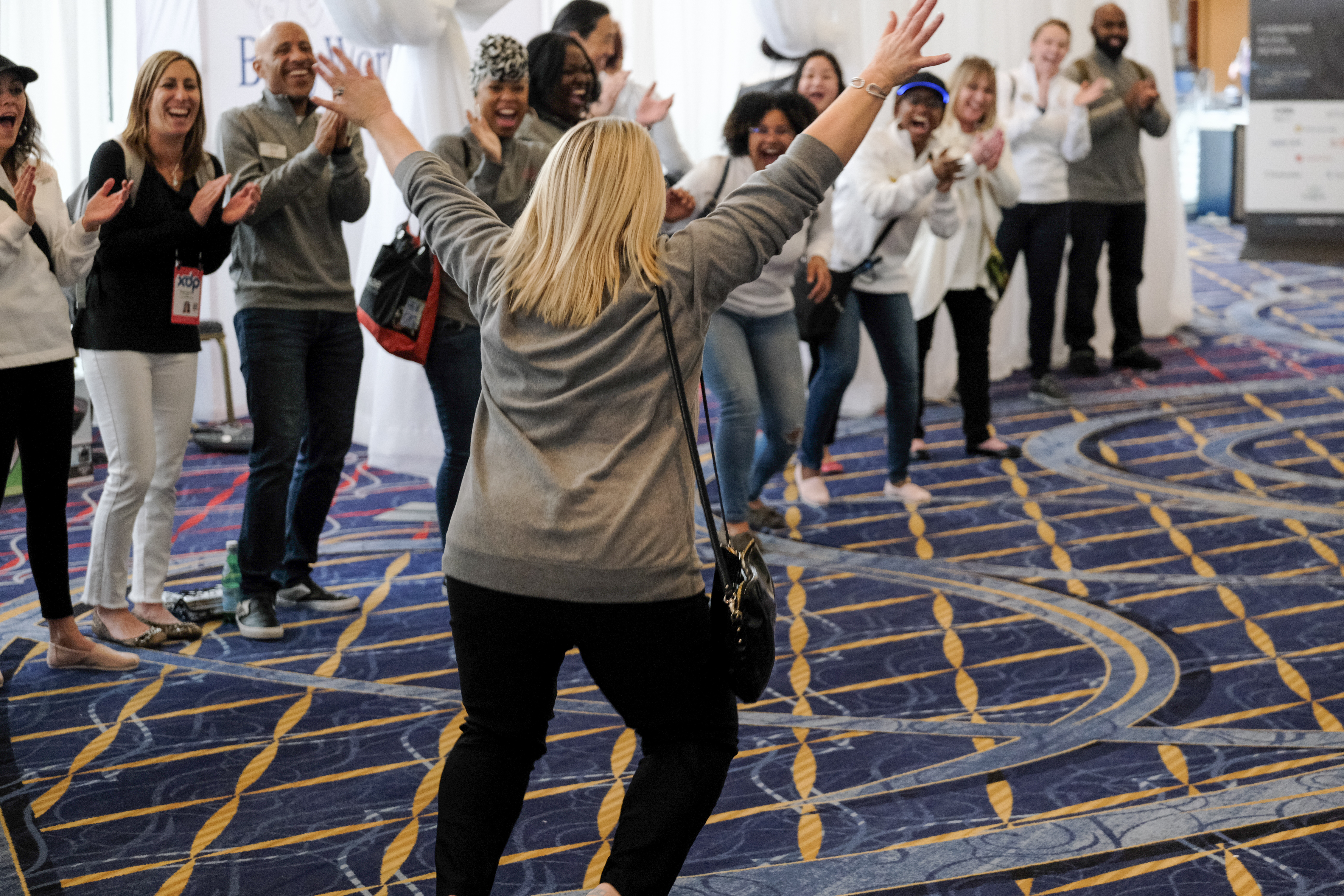In late February, the American Society of Association Executives announced that it had combined its learning and meetings department functions, naming Amy Ledoux as chief learning and meetings officer. The move marks a return to a structure that ASAE used until 2004, when it merged with the Greater Washington Society of Association Executives and then separated its content development and meetings operations teams.
Ledoux has been with ASAE since that change took place. She now shifts from her longtime role leading the association’s eight-person meetings and exhibitions department to also managing the eight people from the learning department, who create content and manage speakers and presenters for about 45 in-person events plus a growing roster of online events.
We caught up to Ledoux recently to find out why the departmental merger makes sense for ASAE, how it will change her role and her team members’ roles, and how other associations might consider and implement this type of change.
MeetingsNet: Why did ASAE choose to bring the two disciplines under one umbrella at this time?
Amy Ledoux: The primary catalyst was that we had some change in staffing—our chief learning officer left in October 2019, and it is wise to use such an opportunity to evaluate how you are doing things before simply bringing in another person. We asked ourselves, could we be doing this in a different way that could be better? When we merged with GWSAE years ago, we had real strengths in the learning area and therefore went to having separate oversight for learning and for meetings operations. But recent circumstances gave us the chance to re-examine our overall learning strategy: What do our members need, what programming do we need to introduce and phase out based on that, and how do we deliver each of our offerings based on that?
 MeetingsNet: What are the benefits of having both functions under one leader?
MeetingsNet: What are the benefits of having both functions under one leader?
Ledoux: I think it streamlines things—you just have less of the friction that can happen with two leadership styles as you try to get things done. It will help make the experience for our members more consistent because the people who are developing content and those who are delivering the experience are now closer in their day-to-day dealings. When you have two separate entities, they tend to stay in their own groups; that’s just nature. The learning team is building content and managing speakers, while the meetings team is working on the logistics and contracts. So it does make sense when you are building out all the elements of each meeting that it be as seamless as possible internally—they’re just different job functions with the same larger goal.
Even in the short time we’ve been a single unit, the improvement in coordination is noticeable. There is more conversation and problem-solving happening spontaneously across the teams, and I think having processes and guidance fall under one person makes a difference.
MeetingsNet: How much work will it be to blend these two departments?
Ledoux: I need to know where our strengths lie and where our gaps are and then figure out how to fill those gaps, whether it be updating content or the ways we deliver it or something else. I am talking to each person on our blended team to see what is working and where we need more support. We are also doing a comprehensive product review because there can be a lot of reasons why events perform or not: Sometimes the information is not as relevant as it once was, or the way we deliver it is not the best for members anymore—maybe a face-to-face event goes online. I just need to get a sense of where we are high functioning and where we can do a better job.
Also, we have to create wider bandwidth across our team so people can take on new things; part of that involves phasing out things that aren’t as valuable to members, and part of that is knowing each team member’s strengths and adapting their roles to leverage those strengths.
MeetingsNet: Speaking of adapting roles, you now oversee a volume of work that used to be handled by two managers. How will you find the time to do that?
Ledoux: A big part of the conversation I’ve had with our executive team involves how are we going to fold two full-time jobs into one. The reality is that it’s just not possible. But before we merged the teams, we knew that each one had people who could be leaders. So now we must identify what my responsibilities will be going forward, and who is best able to take some of my previous responsibilities. The goal is for me to focus more on strategy and partnerships; I won’t be doing the specific things I did when I oversaw meetings and expo, and I am not going to do all the things that were being done by the chief learning officer. So this is a great opportunity to elevate the roles of some people in the department.
MeetingsNet: What are the key considerations for an association that might want to merge its education and meeting-operations departments?
Ledoux (in photo below with coworkers): First, how would it benefit the membership in terms of updating your products and processes in ways that keep you relevant to them? Second, do the people whose roles you might want to change have the right strengths? It might help to bring in an outside consultant for a needs assessment. But if you do it yourself, you have to ask the right questions and answer them honestly: Here's what we need to get from each of these changing roles; who on the team has demonstrated the skills that would best serve each role?






